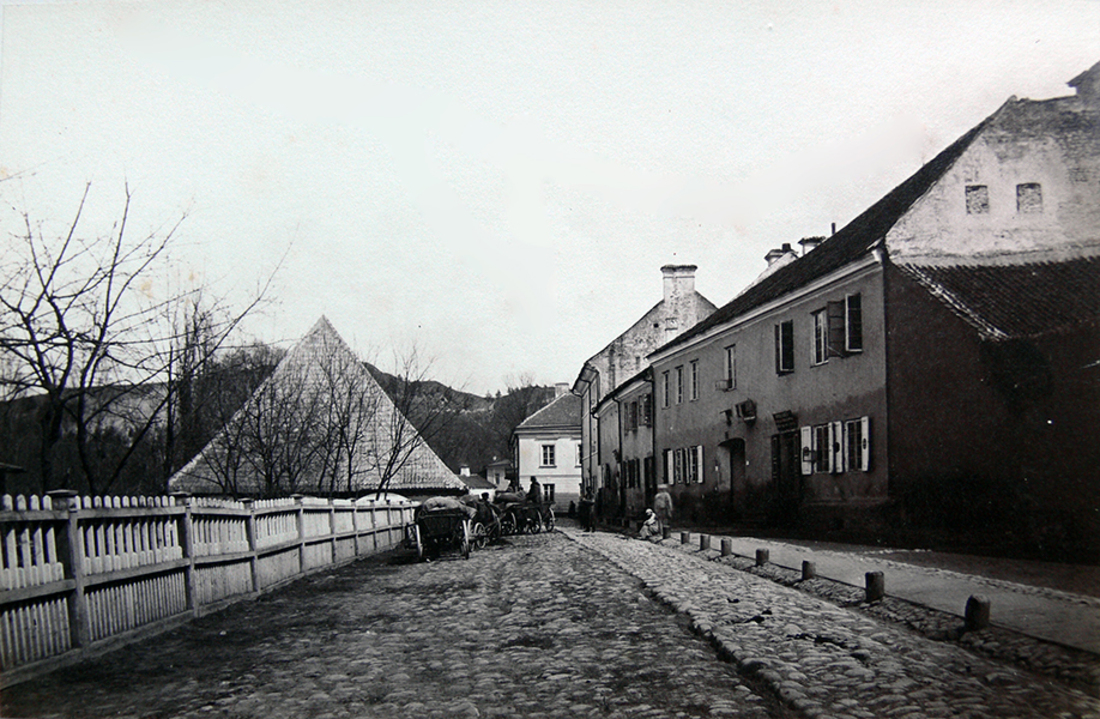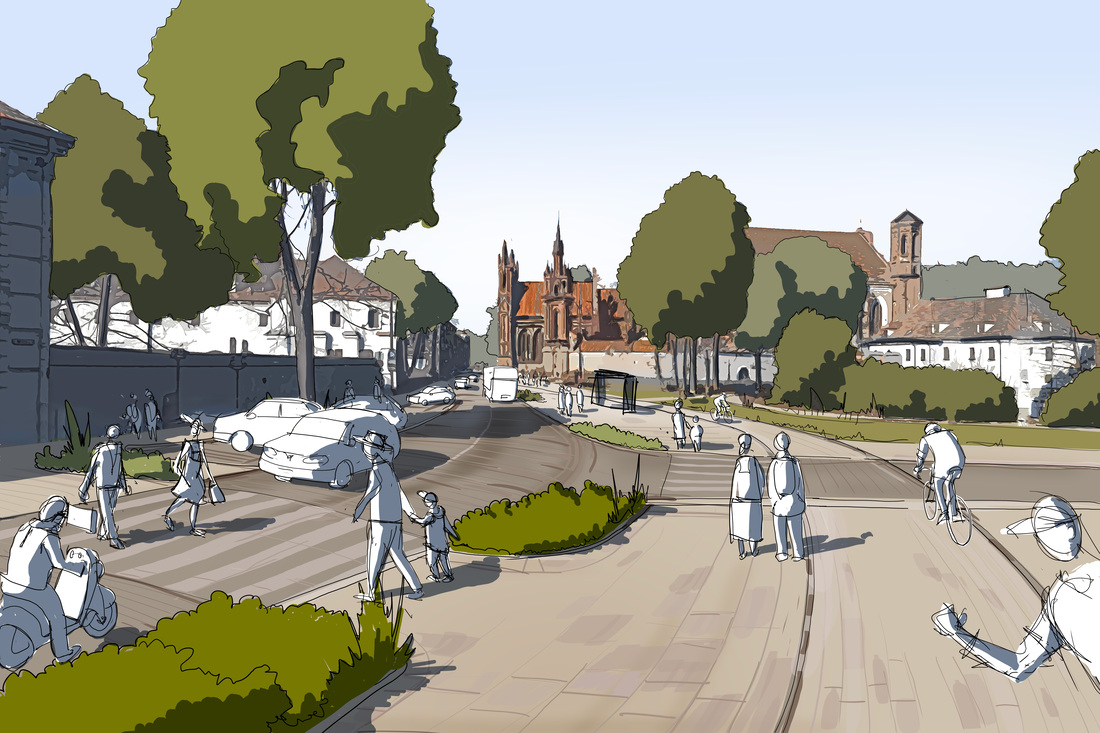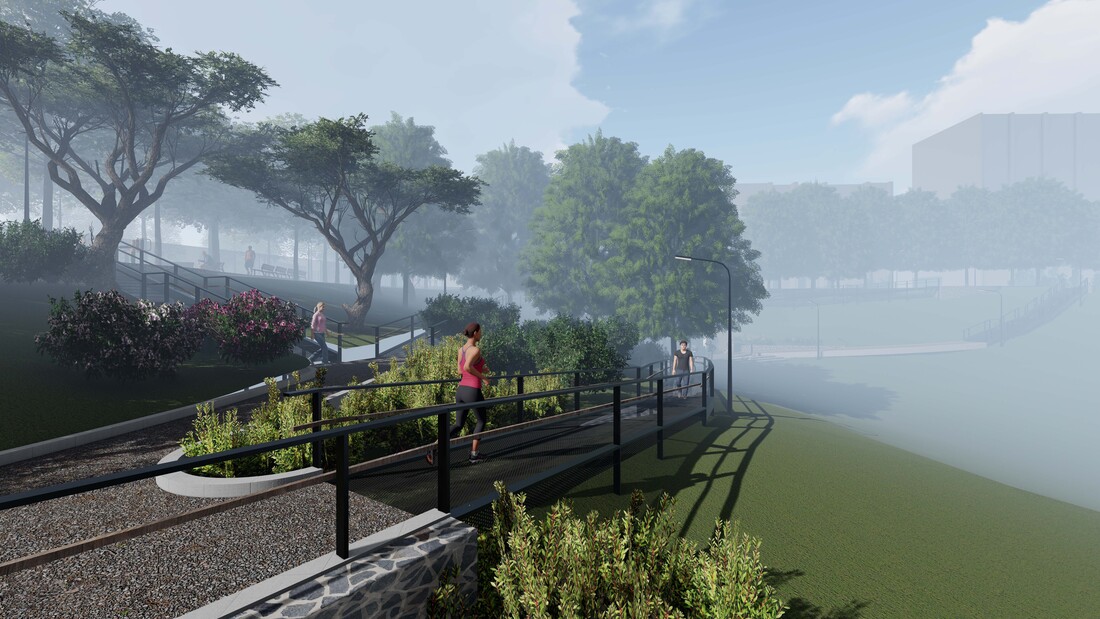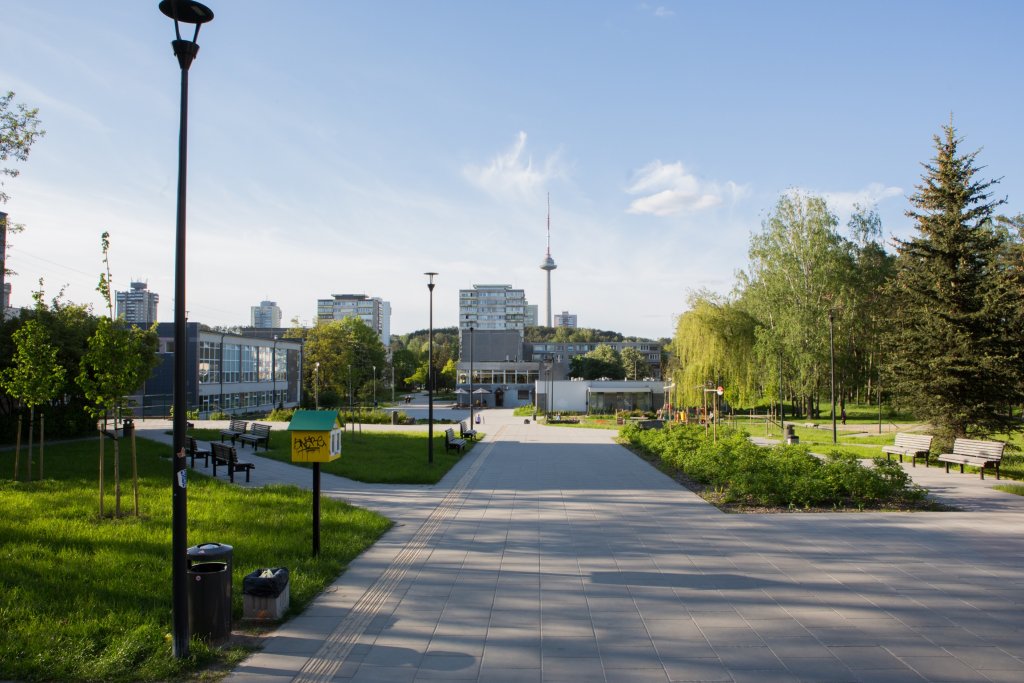Trakų, Barboros Radvilaitė and Maironio Streets in Vilnius Old Town will be reconstructed in the coming years: their pavement will be replaced, their parameters will be slightly changed – their width, pavements. The streets will be adapted to sustainable mobility and safe traffic, while preserving their valuable features.
On these streets, the following changes are planned: – Street surface: the pavement of the different parts of the streets will be adapted to their historical and heritage significance and use. The existing mottled granite pavement in Trakai Street is being repaired, while basalt paving is planned in the historical part of Barboros Radvilaitė Street and Maironio Street. The pavements are to be paved with granite tiles. The cycle paths shall be paved with granite cobbles. Maironio Street from the intersection with Užupio Street to the intersection with Subačiaus Street shall be asphalt surfaced. Cycle paths in this section shall be red asphalt, pavements shall be concrete tiles – Street parameters: street parameters (location of kerbs, carriageway width, pavements, cycle paths) shall be adjusted to give priority to sustainable mobility and traffic safety. – Preservation of the historical context: the project seeks to emphasise the importance and historical significance of several main historic streets in Vilnius Old Town as one of the most important elements of the cultural heritage area, without causing damage to the protected heritage of the city. The redevelopment projects for the above mentioned streets will be presented to the residents in a remote meeting
8 May, 6 pm Registration link: https://forms.office.com/e/BKhHkxWf3c During the meeting, project developers will present the results of their work and projects. The aim of the meeting is to inform citizens about the upcoming changes and to hear their insights on the planned changes. The projects and the meeting with residents are organised by ID Vilnius UAB. Any questions in advance can be sent to dalyvavimas@idvilnius.lt. Trakai, Barbaros Radvilaitė and Maironio Streets are located within the territory of the UNESCO World Heritage Site of Vilnius Historic Centre. These streets preserve the old spirit of the city of Vilnius, its history and cultural heritage, and are of particular importance for local residents, history researchers and tourists.

Trakai Gate, circa 1785 by Franciscus Smuglevičius

Visualisation of the Trakų Street project.
Trakai Street, 280 m long, located in the oldest part of the city, formerly known as St. Dvasios, Senators’, Didžiaja, or Third Senators’ Street, is one of the few streets in the Old Town that has kept its old name during the wars and the Occupation, and it is closely linked to the 14th century (when it served as a road from Vilnius to Trakai). Its excellent geographical position attracted the attention of nobles, merchants and wealthy citizens. Foreigners coming to Vilnius always mentioned Trakai Street as one of the most beautiful and richest streets in the city. At the beginning of Trakai Street stood the Trakai Gate, from which the city’s defensive wall stretched and the Kačerga stream flowed. The gate was demolished in 1803, and its former location is symbolically marked by the sculpture “The Guard of the City Gate” by S. Kuzma, which is located in the niche of a building at the intersection of Trakai and Pylimo streets. Trakai Street was one of the first streets to be paved with stone. Since the 16th century, after the construction of the water supply system in Vilnius, water flowed through wooden pipes from the Vingriiai springs to the noblemen’s palace on Trakai Street, where the oldest Franciscan monastery in Vilnius was founded, as well as the Church of the Blessed Virgin Mary. The oldest Franciscan monastery in Vilnius was the Church of the Assumption of the Virgin Mary.

Royal water mill on Barbora Radvilaitė Street, 1869. J. Čechavičius

Visualisation of the Barboros Radvilaitės Street project.
Barbara Radvilaitė Street has also had several names in different historical periods, such as Karališkoja or Karališkės Mills, Królewska, Pionierių Street. The first name refers to the Royal Mill, which stood at the intersection of Barbara Radvilaitė and Pili Street, while the history of the street itself reflects the changes in the course of the city’s life from the past to the present day. A number of historical buildings such as the Kirdiejus Palace and the Rodkevičius House have been preserved here, and their history is linked to various episodes in the lives and activities of prominent people.

Maironio Street in 1873

Visualisation of the Maironio Street project.
Meanwhile, Maironio Street was known as Tymo Street, and its history is linked to the former Bishop’s Mill and thyme leather workshops. The street ran along the left bank of the Vilnia River between Užupis and Paplaujos bridges. During the annexation of Tsarist Russia, the street was demolished to make way for St. However, many historic buildings and spaces have been preserved to this day, reflecting the way of life and structure of the old town.





